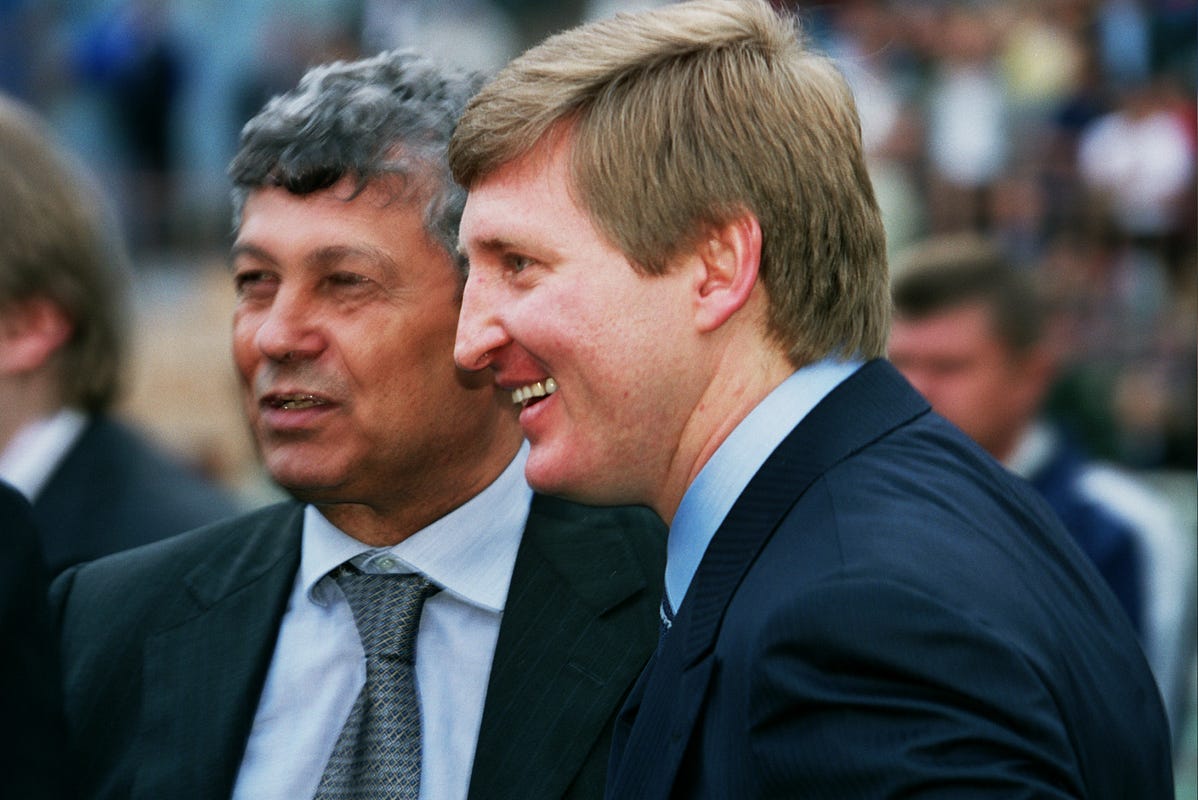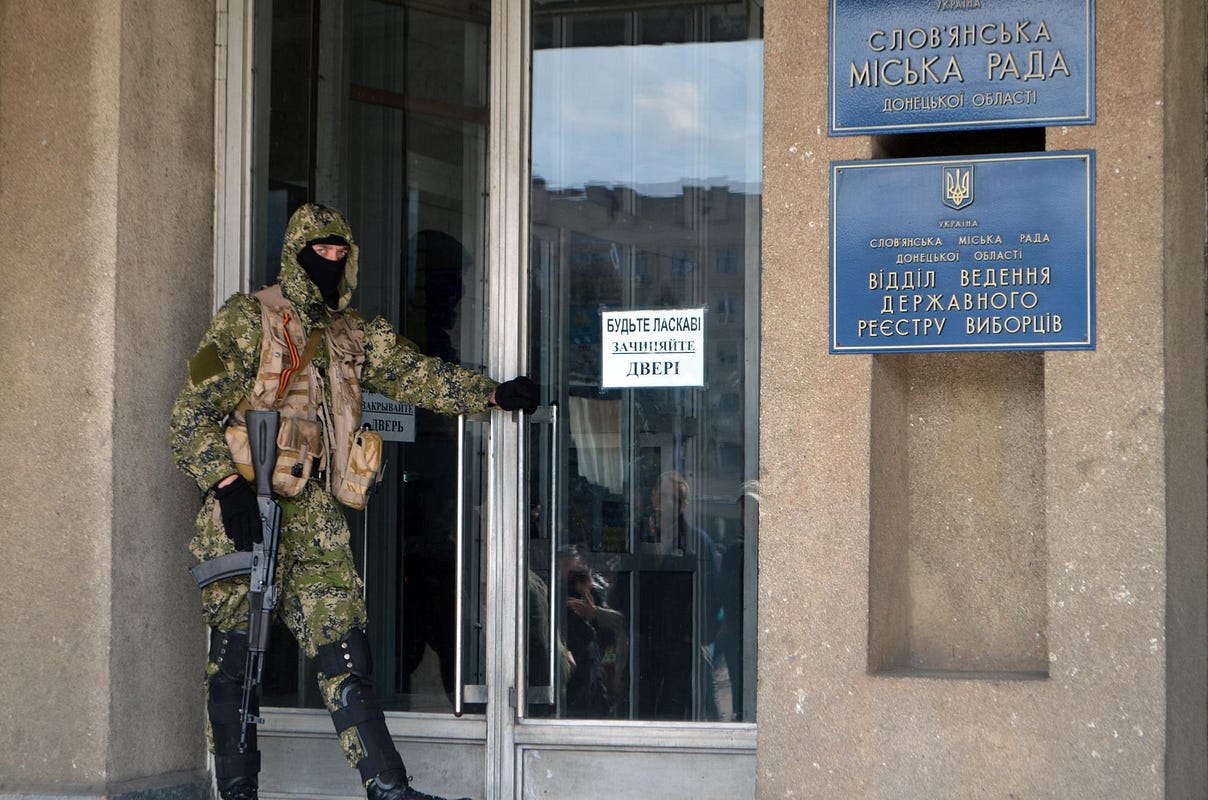For weeks, the Ukrainian military has been embroiled in a no-win conflict with armed pro-Russian separatists.
But on May 15 in the contested city of Mariupol, something very interesting happened. Thousands of unarmed steelworkers took to the streets against the separatists.
The separatists, who had just recently been out in the open, disappeared as quickly as they arrived. Teams of workers from Metinvest—one of Ukraine’s largest mining and steel holding companies—along with local police began patrolling roads and dismantling separatist barricades.
“Faced with waves of steelworkers joined by the police, the pro-Russian protesters melted away, along with signs of the self-declared Donetsk People’s Republic and its representatives,” the New York Times reported.
While it’s too early to tell whether the emergence of the laborers as an organized force will pull eastern Ukraine from the brink, their initial success in Mariupol is in stark contrast to the military’s poor record in recent weeks.
The company plans to expand the operation—known as Volunteer People’s Patrols—to other troubled cities in eastern Ukraine. If successful, it’ll be an example of a private company successfully entering an armed conflict and winning, all without firing a shot.
It’s also a bit worrying. The patrols are employees of a company owned by one of Ukraine’s wealthiest oligarchs. At the same time, he might also be the person who can keep the country together and beat back Russia’s new—and more discreet—way of war.
Privatized conflict
The person at the center of all of this is Rinat Akhmetov. A billionaire industrialist and oligarch, Akhmetov’s holding company System Capital Management is one of Ukraine’s largest businesses.
Together, SCE owns DTEK, which holds considerable coal assets, and Metinvest, which invests in steel and mining. Both DTEK and Metivest employ hundreds of thousands of people in eastern Ukraine. Akhmetov also has expensive tastes. He owns his own soccer team—Shakhtar Donetsk—and one of London’s most expensive condos.
Akhmetov has long been close to the Russia-aligned Party of Regions, which lost power after the Euromaidan revolution in February. But this month, Akhmetov turned turned against the separatists and sent his industrial army into the streets.
One reason, according to the Times, is to ward off the economic chaos that would strike SCE’s firms if eastern Ukraine were to split and join Russia.
There’s a lot we don’t know about why the separatists vanished after Akhmetov sent the workers into the streets. They could simply be outnumbered, or otherwise can’t risk a confrontation.
“Has a deal really been signed between Akhmetov and both parties, or has Akhmetov simply backed Kiev while the separatists, at least in Mariupol, feel that they have no recourse but to cooperate with the steel workers?” asked the liveblogging team at The Interpreter.
Either way, it appears to be working on a limited scale, for the moment. Now contrast this with the actual Ukrainian army.
When Kiev ordered soldiers to crush the separatists, the troops quickly became bogged down against both non-violent citizen resistance and armed separatist resistance. The soldiers are poorly equipped and lack basic necessities to the point the defense ministry appealed to the Internet for funds.
Before the steel workers showed up, separatists captured and burned a Ukrainian BMP-2 armored vehicle in Mariupol. The Ukrainian national guard abandoned one of their bases in the city. Separatists also ambushed a convoy near Kramatorsk on May 13, knocked out a BTR-70 armored vehicle with a grenade launcher and killing seven soldiers.
Ukraine is facing “an enemy that has up to 20 years of combat experience consisting of mostly Russian military intelligence, Chechens, and mercenaries,” Andriy Antonyshchak of Ukraine’s 1st Special Battalion of the National Guards told reporters on May 13.
All this to say if Russia puts the screws on Ukraine, then the Ukrainian military will have serious trouble reacting to it. But there other implications. Namely, there are other means states can wage war without involving standing military forces.
Separatist fighter in n Sloviansk, Ukraine on April 14, 2014. Yevgen Nasadyuk/Wikipedia photo
Invisible occupation
The Kremlin has become very good at waging war—and winning—without having to shooting anyone.
Russia has developed a doctrine that relies on espionage, media propaganda, bribery, diplomatic judo, private military companies and insurgent-style combatants to carry out military operations outside its own borders.
All of this happens before Russia ever commits uniformed soldiers, and all of it is plausibly deniable. When Russia invaded Crimea in February, separatist groups and neo-Cossack militias were already in control of the streets and occupying public buildings.
By the time Ukraine could have ordered its troops to retake the peninsula’s two largest cities, the soldiers found themselves trapped inside their bases by Russian troops who appeared suddenly and without warning. By that point, the Ukrainians had already lost.
“It is the operationalization of a new form of warfare that cannot be characterized as a military campaign in the classic sense of the term,” wrote Janis Berzins of the National Defense Academy of Latvia in a recent report. “The invisible military occupation cannot be considered an occupation by definition.”
It’s really difficult for Ukraine to defend against an assault like this, as the main option open to Kiev—using the army—means sending soldiers to maintain law and order while fighting a nebulous urban enemy. That’s something Ukrainian soldiers are not trained to do.
This also makes Kiev appear to be the aggressor, as the militants can plausibly say they’re defending themselves against an attack by an oppressive government rather than advancing the interests of a foreign one. Ukrainian soldiers—by firing on armed groups in the east—lose the propaganda war.
Akhmetov’s industrial army is different. These are workers who live and have jobs in the area. They can also likely react quickly to unfolding events compared to a poorly-managed army that is being directed by a high command—and whose communications are likely compromised by Russian intelligence.
“The fact remains that despite Russia’s narrative, and the very vocal pro-Russian minority, polls consistently show that separatism is not popular at all in eastern Ukraine,” noted The Intrepreter. “The steel workers could simply be a formalized embodiment of that popular opinion.”
More broadly, thousands of workers taking to the streets has a psychological effect. One of the defense strategies Berzins recommends is for Russia’s neighbors to create citizens’ armies similar to Finland, Switzerland and Israel. These forces are harder to bribe and demoralize.
“This means assuring that each citizen has the right to resist the aggressor, including by military defense, guerrilla warfare, civil disobedience, non-collaboration, and other means,” Berzins wrote in the report.
Russia’s strategy, according to Berzins, is to focus on the psychological war. But the steelworkers put the burden of initiating violence back onto the separatists. “The Donetsk People’s Republic understands if they attack unarmed local people, they will lose all support here,” Yuri Ryzhenkov, a Metinvest executive, told the Times.
But if the only person who can beat the separatists is a billionaire mining magnate, does that say anything good about the future of Ukraine?


No comments:
Post a Comment